What is full coverage auto insurance?
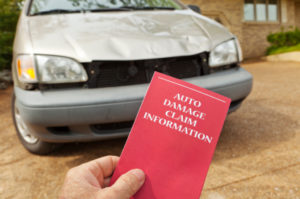 Full-coverage auto insurance is a phrase most people use to define a multi-layered policy with above average protection. It is not something you will find on an actual application, but more of a common term used in the car insurance industry.
Full-coverage auto insurance is a phrase most people use to define a multi-layered policy with above average protection. It is not something you will find on an actual application, but more of a common term used in the car insurance industry.
The only way to ensure great car insurance rates is to add your ZIP code into the FREE tool by clicking here!
When you need to make inquiries about auto insurance, one of the issues you might experience is the different types of terminology. Many times, people become confused if they are not sure of what certain phrases mean. Unfortunately, since most policies have similar coverage, you can make bad choices if you do not educate yourself in advance.
Auto Insurance Coverage Definitions
To understand why most people use the expression, full-coverage, you must first realize that you build your premium based on selections. It is essential for you to grasp this concept. Therefore, you need to know how define each level of coverage.
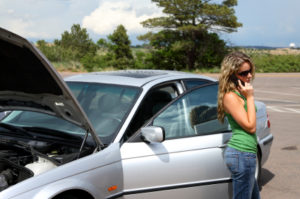 The first and most fundamental part is bodily and property damage liability coverage. You must choose this feature first and it is not optional. Liability is a mandatory portion of any type of auto insurance policy, not just full-coverage.
The first and most fundamental part is bodily and property damage liability coverage. You must choose this feature first and it is not optional. Liability is a mandatory portion of any type of auto insurance policy, not just full-coverage.
Regardless of your residence within the United States, you must have the state minimum, at least. A quick review of your Department of Insurance website will familiarize you with the requirements.
Liability car insurance coverage breaks down into three sections, including bodily injury protection for every accident and person as well as damage to property. Bodily injury safeguards the policyholder from the costs associated with accidents, but it only applies to the medical expenses.
Property damage protection can help pay for any other driver’s vehicle. It also allows for reimbursement towards private or public property, like damage to a home or business. It will not help mend your car, however.
When you first begin the application phase, you will see bodily liability selections starting at no less than $10,000.
There is no state in the U.S. with liability choices lower than this amount. This is the payment limit for every person involved in the accident.
The next figure represents the amount for each incident. It is usually higher than the first, because it covers the entire event. Finally, the last amount is often much, lower since property damage varies significantly.
For example, if you run into a homeowner’s fence, you would submit a damage claim and your liability property damage coverage pays the cost. According to the experts on ServiceMagic.com, repairing a simple wooden fence costs approximately $500. However, a vinyl fence is lower at about $175. Unfortunately, if the entire fence requires a brand new installation, the price increases to $3,000 to $5,000.
 Another example using property damage limits includes the other driver or driver’s car. It is unlikely that you will need to pay for the replacement of another vehicle, but if the car has too much damage, you might have to do just that.
Another example using property damage limits includes the other driver or driver’s car. It is unlikely that you will need to pay for the replacement of another vehicle, but if the car has too much damage, you might have to do just that.
The three states with the lowest liability limits, for each person, are Florida, Oklahoma, and Louisiana. In these states, they display their liability coverage selections as 10/20/10. However, California, Delaware, Pennsylvania, New Jersey, and Massachusetts all have $5,000 property damage minimum limits, with higher bodily injury limits.
Thus, it is wise that you opt for higher quantities, no matter if it is for medical expenses or the cost to repair property. Anything that your coverage does not pay for will come directly from your personal finances. If you have limited funds, you could end up in debt very quickly.
Two other types of coverage included in a conventional full-coverage policy include, collision and comprehensive. They both guard against any kind of destruction towards your own car. Collision is for accidents, and unlike liability, pays to fix your car. Comprehensive is for anything non-accidental. This includes fires, water damage, hail, and even theft.
If your state participates in the no-fault automobile insurance plan, they require personal injury protection or medical payment coverage. This goes onto your full-coverage policy as well. You have no choice in the matter, it is mandatory. Otherwise, you could add either of these levels as options.
Uninsured/underinsured motorist coverage is also mandatory in specific states. The North Dakota Legislative Council for Transportation lists these states as North and South Dakota, Washington D.C., Massachusetts, Maryland, Missouri, Minnesota, New Hampshire, New York, New Jersey, Rhode Island, Vermont, South Carolina and Wisconsin. This final selection completes your full-coverage policy.
Car Insurance Regulations and Requirements
The car insurance regulations and requirements never mandate full-coverage. Each state makes the majority of the choices optional because many customers do not need as much protection. To them, forcing coverage would seem unfair and unnecessary.
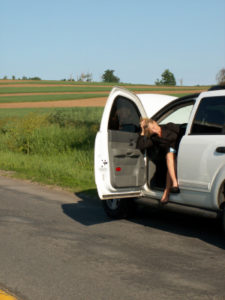 Others may not want to deal with the hassle of purchasing car insurance and the fluctuating rates that often occur. This is why the way each state regulates insurance companies differs.
Others may not want to deal with the hassle of purchasing car insurance and the fluctuating rates that often occur. This is why the way each state regulates insurance companies differs.
For instance, Ohio residents have alternatives if they do not want to purchase car insurance. Instead of dealing with full-coverage, add-ons, or a basic policy, they can opt to purchase a bond or collateral. This may not appeal to the entire population, but for those with specific circumstances, it works in their favor.
How GAP Insurance Plays a Role in Full Coverage Rates
Guaranteed Auto Protection, also called Lease/Loan Payoff Protection, is usually offered to customers purchasing or leasing new cars during final processing. While you complete the sales agreement and learn about your monthly responsibilities, someone, usually the finance manager discusses GAP insurance with you.
It is an add-on that protects you if someone takes your car. If law enforcement officials never recover the property, you still have a financial obligation to pay off your loan. It also applies when you have an accident with devastating results.
Collision coverage compensates for damage up to your limits and comprehensive pays the value after deducting the depreciation amount.
Even when you collect your check, you will probably not receive the full amount of your vehicle. It may be enough for you to find another car, but since you still have an outstanding car loan, they will continue to seek payment from you.
GAP insurance makes sure you receive extra money that you can put towards paying for your lease or loan. If you budget your money, you should be able to bring your balance to zero and buy another vehicle.
Free Car Insurance Comparison
Compare Quotes From Top Companies and Save
Secured with SHA-256 Encryption
Calculating the Cost for Full Coverage Car Insurance
 There is no clear-cut way to calculate the cost for full-coverage car insurance for every buyer because the variance is considerable. You need to account for too many things and each customer has too many differences. Insure U.org explains in detail how car insurance companies create their own system for calculating rates.
There is no clear-cut way to calculate the cost for full-coverage car insurance for every buyer because the variance is considerable. You need to account for too many things and each customer has too many differences. Insure U.org explains in detail how car insurance companies create their own system for calculating rates.
However, you can estimate what you might pay by looking at certain statistics. If you have a good driving history, you probably have a low-risk and this is advantageous. Try to find out what the state average is where you live and then get a few quotes. Use online car insurance companies so you receive the information quickly. Build a list with prices from high to low.
Just like any other kind of comparison-shopping technique, toss out the high and low numbers and concentrate on those in the middle. Do not forget about discounts and marketing strategies that many auto insurance companies use. Look for anything geared towards new customers.
If you are not looking for a new car insurance company because you already have an existing carrier, you can always make suggestions to see if they participate in similar offers. You will never know until you inquire. Sometimes, they have special deals, specifically for people who ask and use a more pro-active method.
Dispelling Myths about Full Coverage Auto Insurance
Many customers are not 100% clear on full-coverage and a number of myths need addressing. First, full-coverage should not imply guaranteed protection. There are many setbacks to expect that will require you to pay for certain expenses.
Full-coverage will not help if your tire blows out and needs replacing. A number of customers have left the repair shop scratching their heads because they assumed their insurance would pay. Unless you have an accident and damage your vehicle or someone else’s car, you are on your own.
You also have no security when it comes to rental car use. This is always a surprise to folks when they need to rent a car because their vehicle is in the repair shop or out of commission for some reason.
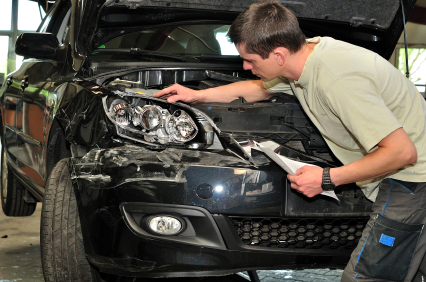 It could be mechanical failure, which full-coverage also does not cover, or the result of an accident. At any rate, if your car does not work properly and need to rent one, you need to add this level of protection to your policy as an add-on.
It could be mechanical failure, which full-coverage also does not cover, or the result of an accident. At any rate, if your car does not work properly and need to rent one, you need to add this level of protection to your policy as an add-on.
Unless you have a motor club service or your new car warranty includes towing reimbursement, you should think this over, because full-coverage does not include this service either. You may also need concierge services that come to your aid if you run out of gas or have any type of emergency.
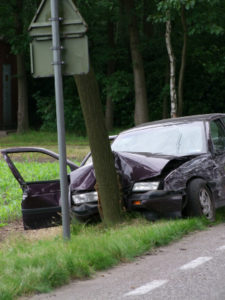 Protect Yourself after a Collision
Protect Yourself after a Collision
Another assumption people make occurs directly after an accident. They assume because they have full-coverage that they should take charge and start giving away personal information.
They might think this will help with the claims process, after all, we see this process in a number of movies, and television shows. Unfortunately, this can lead to identity theft and you need to protect yourself after a collision by learning what you should and should not do.
All of the experts agree that you only need to provide your first and last name, along with your automobile insurance information. Anything else can cause harm to your finances and sometimes, your individual safety. If you have any level of discomfort or feel nervous, you can wait in your vehicle until a police officer arrives and then exchange your paperwork.
When you have full-coverage, you have a number of options that will protect you and your finances. You can file a claim for theft, damage, or vandalism. Your concerns about lost wages because you missed time away from work disappear. However, full-coverage cannot solve all of your problems, especially if you keep your limits too low.
The best way to decrease the probability of negative incidents is to increase your attentiveness.
This means never putting yourself in a high-risk position. Do not make yourself a target for a crisis. If you know, certain areas have a high crime rates avoid them if possible. Do not leave valuable property in plain sight and above all, never assume you can leave your doors unlocked, even if it is your own garage.
Use the FREE ZIP code toolbox to find great car insurance rates today!
